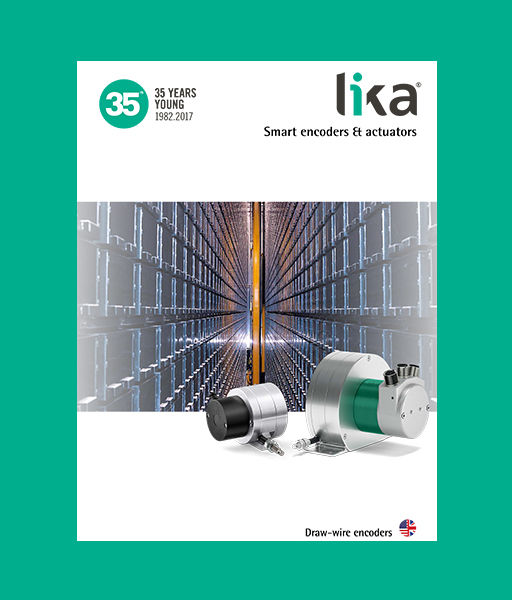A few good reasons to choose a draw-wire encoder

Browse the new catalog dedicated to the draw-wire encoders: https://www.lika.it/media/1403/d-1/t-file/CAT-DRAW-WIRE-ENCODERS-2010-E.pdf
What is a draw-wire encoder?
A draw-wire encoder is a measuring system that is basically made up of two parts integrated in the single device:
1. a rotary encoder, it can be either optical or magnetic, with incremental, absolute, and analogue outputs (a potentiometer can be installed as well);
2. a stainless-steel measuring wire having different lengths (Lika's range varies from 2 m up to 50 m / from 3.28 ft up to 164 ft). It is wound on a spring-wired drum and then pulled out and rewound during operation.
The measuring wire is attached to the moving axis being measured. The encoder is coupled to the spring-wired drum, so as the cable moves back and forth, the encoder is rotated. In this way, the linear motion of the wire is translated into a rotary motion by the drum and then into a positional information by the encoder. Additionally, the wire's flexibility enables curved paths through guiding rollers.
Why a draw-wire encoder?
Let's consider that the encoder-drum assembly (the fixed part of the device and also the most delicate one) and the stainless-steel wire that is attached to the mechanism being measured (the moving as well as the most rugged part) can be viewed in some way as two separate components.
Thus, the encoder-drum assembly can be installed away from the wire and the axis being monitored. For this reason, the assembly can be mounted in a safe place, easily accessible, and adequately protected. While the stainless-steel cable can be submitted to harsh environmental conditions at the same time, i.e. dirty, humidity, high temperatures, etc. Furthermore, by virtue of the small footprint of the cable, the operational space required by the wire can be very tight, even a few centimetres wide, because the encoder, as stated, can be mounted in a different and larger location.
A further benefit is that the cable-pulling mechanism can be coupled to any encoder which preserves the same complete set of functions as the standard encoder. This provides excellent flexibility in terms of applications and environments. Lika's range includes the following versions:
• with programmable incremental encoder: resolution down to 0.01 mm / 10 µm (16,384 PPR), Universal output circuit HTL/TTL, fully configurable according to needs via free software tool;
• with SSI and analogue absolute encoder: resolution down to 0.012 mm / 12 µm; analogue version with TEACH-IN buttons and overrun safety function, current and voltage options;
• with Ethernet and fieldbus absolute encoder: Profinet, EtherNet/IP, EtherCAT, POWERLINK, MODBUS TCP, Profibus, CANopen, DeviceNet, MODBUS RTU. This allows the Ethernet technology to be available in the most uncomfortable conditions (the narrowest spaces, harsh industrial environment). Resolution down to 0.024 mm / 24 µm, full set of configuration and diagnostic parameters: position and velocity readout, full scaling, preset, code sequence, extensive diagnostics, Ethernet and bus network settings;
• string-pot: resistance output 1 to 20 k, current and voltage output.
When a draw-wire encoder?
A wire-actuated encoder can replace a standard encoder in many uses. It can be a good solution when the operational space is constricted or the environmental conditions are severe. The encoder body in fact can be mounted in a safe place, easily accessible, and adequately protected. While the measuring wire requires minimum space and can be subjected to harsher conditions.
Typical applications are mobile equipment and construction machinery (outriggers, stabilizing slides, booms), telescopic cranes, bucket trucks, forklift trucks, automated guided vehicles, agricultural/forestry machinery and equipment, scissor lifts, car lifts, loading platforms, warehouses, electro-medical equipment (computed tomography scans, operation and examination tables, hospital beds and dentist's chairs, etc.).
Draw-wire encoders:https://www.lika.it/eng/products/draw-wire-encoders/-1